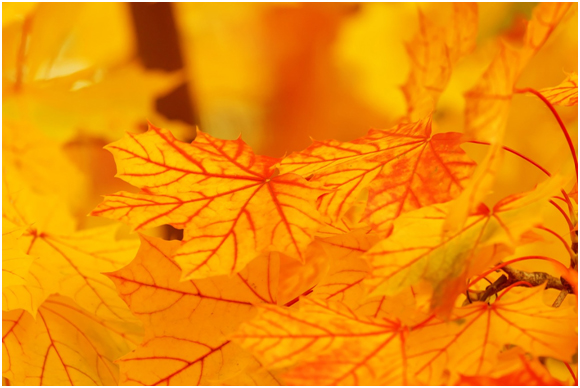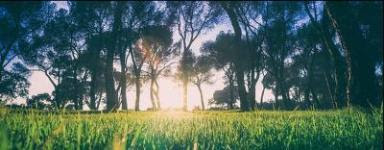Every autumn we enjoy the beauty of the fall colors. But did you know that the mixture of red, purple, orange and yellow is the result of chemical processes that take place in the tree?
During the spring and summer, leaves work like miniature factories to make most of the food necessary for the tree’s growth. This food-making process takes place in cells in the leaves that contain chlorophyll, a chemical that absorbs energy from sunlight and uses it to transform carbon dioxide and water into carbohydrates, such as sugars and starch.
It’s the chlorophyll that gives leaves their green color.
Leaves also have other chemicals, such as carotenes and xanthophyll, that make leaves look yellow or orange. However, most of the year these colors are masked by the huge amount of green chlorophyll in the leaves.
Chemical Changes Happen in Autumn
As temperatures cool and days shorten in fall, leaves stop making food. The chlorophyll breaks down, the green color disappears, and the yellow to orange colors become visible to give leaves part of their fall splendor.
At the same time, other chemical changes happen that give rise to additional colors, such as the red anthocyanin pigments.
The end result of all these chemical changes is an endless variety of fall leaf colors, depending on the type of tree.
For example, dogwoods and sumacs turn reddish purple, while sugar maples are a brilliant orange. Other trees show only yellow colors and some leaves, like on many oaks, are mostly brown.
All these colors are due to the mixing of varying amounts of chlorophyll residue and other pigments in the leaf during the fall season.
Weather Affects Fall Leaf Colors
Aside from leaf pigments, temperature, light, and water supply also influence the intensity and duration of fall leaf color.
For example, low temperatures that stay above freezing will favor anthocyanin formation, which produces bright red leaves in maples. However, an early frost will weaken the brilliant red color. And rainy or overcast days tend to increase the intensity of fall colors.
So this fall when you marvel at the spectacle of colors around you, remember that it’s those tiny little pigments in the leaves that make the show possible.
Fun Pumpkin Facts
Looking at all the carved and ornamental pumpkins springing up around town got me thinking – Are pumpkins vegetables or fruit? What are they used for? Why do we carve Jack-o-Lanterns? So here are some interesting facts about the funny-looking orange fruit (yes, it’s a fruit according to the US Supreme Court – but not to botanists) that is seen on display throughout America each Halloween.
- Around 90 to 95% of the processed pumpkins in the United States are grown in Illinois.
- Over 1 billion pounds of pumpkin are grown in America each year.
- Morton, IL is the “Pumpkin Capital of the World” (at least according to the good folks in Morton).
- Pumpkins are members of the vine crops family called cucurbits, which includes cucumbers and squash.
- Pumpkins originated in Central America. Seeds from related plants have been found in Mexico, dating back over 7000 years to 5500 B.C.
- Pumpkins were once recommended for removing freckles, curing snake bites, and preventing prostate cancer in men.
- The most popular use of pumpkins is for decoration as jack-o-lanterns, with 80% of the pumpkin supply in the United States being available in October.
- In early colonial times, pumpkins were used as an ingredient for the crust of pies, not the filling.


